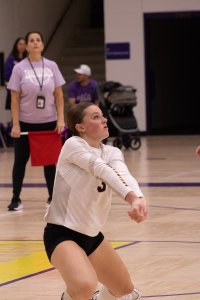Behind the Call: Fall sports coaches give inside look into the play creation process
September 24, 2021
To the untrained sports eye, it might appear that players simply show up to a field and start playing a game. However, coaches consider a variety of factors to determine which players will yield the best team result.
For football, head coach Michael Huffman said the creation of plays is specific to each unique team each and every season, crediting a well-known inspiration.
“I heard Nick Saban say many years ago, ‘come crunch time, think players not play,’” Huffman said. “Every kid has a special skill set unique to them. We are going to design plays to allow them to do what they do best.”
Huffman added that each year plays differ because plays are crafted to fit specific players’ talents and abilities.
“We have a pretty large menu of plays that we have been successful with over the years,” Huffman said. “Each year you look at the players you have and utilize the recipe to best fit their physical and mental attributes.”
In softball, the making of plays is simpler, according to head coach Wade Tracy.
“It depends on the situation in the game or how we are playing,” Tracy said. “If you have someone that can run well, then you might devise ways to get them moving on the base path and then allow them to use their legs to impact the game.”
According to both coaches, the process of teaching these plays to their players relies on practice.
“Reps, reps, and more reps,” Huffman said. “We begin working on plays in meetings right after spring break. Come summer time, we run the plays over and over until they are ingrained in the fellas.”
Coach Tracy said that softball plays are reviewed before games and during practice
Tracy described the play-calling for softball as “a number system” both offensively and defensively.
“We call out a number that corresponds to a pitch or play that the player runs,” Tracy said.
Huffman said that football uses cues from the sidelines to communicate with players.
“Offensively, we have a series of hand signals that we signal into the skill players and the quarterback tells the lineman what to do by code words,” Huffman said. “Defensively, Coach McVey uses hand signals to let the defense know the call.”
Huffman said that crafting plays takes a lot of work by the coaching staff.
“Coaches spend a lot of time breaking down opponents through film,” Huffman said. “They pore over film looking for clues and tendencies that will give the defense an advantage in both the play called and potential successful execution of the play.”
Huffman also noted a major philosophy for his play-calling, knowing your athletes and using them to their best ability.
“Never try to put a round peg into a square hole,” Huffman said. “I feel it’s one of the reasons year after year our guys are out there making big play after big play.”





